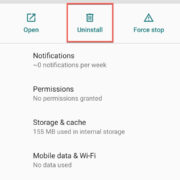In an era where mobile phones seem to dominate communication, landline phones remain a crucial link for many, serving as a reliable means of connectivity in homes and businesses. Yet, there are times when you might need to identify or confirm your service provider for billing, support, or service changes. Whether you’ve just moved into a new home with an existent connection or you’re troubleshooting, knowing who provides your landline service is essential. This guide will walk you through various ways to discover your landline phone service provider, ensuring you can manage your account with ease and confidence.

Examine Your Bill
One of the easiest ways to identify your landline phone service provider is by looking at your billing statements. These documents not only detail your charges but also include crucial information about your service provider.
Detailed Steps:
- Locate your latest bill: Search for a paper bill sent by mail or check your email for a digital copy. If you’ve opted for online billing, you may need to access your account on the provider’s website.
- Review the bill’s details: On the bill, look for the company name, logo, or contact information. This is often displayed prominently on the header or footer of the statement.
- Contact information: If you’re still unsure, use the customer service number or email address provided on the bill to contact the company directly for confirmation.
Summary:
Reviewing your bill is a straightforward approach. It is beneficial because the information is directly tied to your account and reliable. However, if you don’t have access to your bills, you may need to consider other methods.
Check the Phone Box or Device
Your landline phone or the box it connects to may have labeling or branding from the service provider. This is often the case when the provider has supplied the hardware.
Detailed Steps:
- Inspect the device: Look at your landline telephone, especially if it was provided by the carrier when you initiated service. Logos or brand names are often placed on the device.
- Check the connection box: Inspect any connection boxes, splitters, or main phone sockets in your home for branding or stickers that might identify the provider.
- Examine additional equipment: If you have a VoIP (Voice over Internet Protocol) landline, you may have a specific adapter. Check this device for any identifying marks.
Summary:
This method is quick and does not require technical knowledge. The downside is that if the equipment does not have the provider’s information, or if it’s a generic device, it might not yield results.
Use a Phone Number Lookup Service
Online phone number lookup services can sometimes provide information about the provider associated with the phone number.
Detailed Steps:
- Select a lookup service: Choose a reputable phone number lookup service online. There are free and paid options available.
- Enter your phone number: Input your landline number into the search field provided by the service.
- Analyze the results: Look through the information presented to see if it lists a service provider.
Summary:
This method can be helpful and is accessible to anyone with an internet connection. However, relying on third-party services means the information may not always be up to date or accurate.
Dial a Service Identification Code
In some countries, there are specific numbers you can dial from your landline phone that will automatically tell you who your service provider is.
Detailed Steps:
- Research the relevant code: Look up the specific number for your country that provides this information. It varies by region and sometimes by provider.
- Place the call: Dial the number from your landline.
- Listen or note the response: A recorded message will typically announce the name of your service provider.
Summary:
Using service identification codes can provide you with a quick and definitive answer. However, not all regions have such a service, and it may not work with all types of landline services.
Contact the Former Resident or Landlord
If you’ve recently moved into a new home, the previous occupants or your landlord may have this information.
Detailed Steps:
- Reach out: Contact the former resident if you have their details, or ask your landlord or estate agent.
- Inquire about the service: Politely ask for the name of the landline service provider they used or provide them with your number to check their records.
- Confirm the details: Follow up if necessary to ensure the information given is current and correct.
Summary:
This is a more personal approach that can be helpful when moving into a new home. The downside is that it relies on the cooperation and memory of others, which isn’t always reliable or possible.
Consult Neighbors
Neighbors with a long residency in the area may know which providers are available and commonly used.
Detailed Steps:
- Ask around: Inquire with neighbors about which landline providers they use or are aware of in the area.
- Gather information: Collect names of potential providers and then research each to see if they match your service.
- Compare services: If your neighbors have the same cabling or equipment, it could indicate the same provider.
Summary:
This method fosters community connections and can provide insights into local services. However, it assumes your neighbors’ knowledge is accurate and that the previous occupants did not use a different provider.
Look for Clues in Your Own Home
Your home may have leftover documents, manuals, or branding from the previous service installations.
Detailed Steps:
- Search your home: Look for any manuals, installation guides, or documentation that might have been left in storage areas, near the phone socket, or in filing cabinets.
- Examine documents: These documents may have the service provider’s name, contact details, or branding.
- Check for stickers: Sometimes, technicians leave behind stickers or tags near the service entry point or main phone jack, indicating the provider’s name.
Summary:
The advantage of this approach is that it is cost-free and can be done at your leisure. The potential downside is that such documents or clues may not exist or could be outdated.
Call Directory Assistance
Directory assistance services can sometimes provide you with the name of your service provider based on your phone number.
Detailed Steps:
- Find the directory assistance number: This is usually a short, toll-free number specific to your country or region, such as 411 in the United States.
- Make the call: Dial the number and follow the automated prompts or speak with a representative.
- Provide your number: Ask if they can identify the service provider associated with your landline phone number.
Summary:
Directory assistance can offer a direct response and may be reliable where available. On the downside, some directory services may charge a fee for this information.
Check with the National Regulator or Database
Some countries have a national telecommunications regulator or a public database which can be used to identify service providers.
Detailed Steps:
- Identify the regulatory body: Determine the national or regional telecommunications authority in your area.
- Use their tools: Access their online database or contact them directly to inquire about your landline service provider.
- Provide necessary details: You might need to give them your phone number and address.
Summary:
Using regulatory resources can be an official way to get accurate information. However, not all countries or regions will offer this service, and some may require formal requests or paperwork.
Check Company Logos on Equipment and Documentation
Letters or technical support documents may feature the company’s logo or name, providing a hint about your provider.
Detailed Steps:
- Search for any documents: Look for any official letters, brochures, or support documents that may have been sent to your address.
- Inspect for logos: Check these documents for any company logos or contact information.
- Cross-reference this information: Once you have a potential company name, search online or in a phone directory to confirm it is a landline service provider.
Summary:
This is a simple way to potentially identify your provider, but it can be unreliable if you do not possess any related documentation.
Consider Regional Providers
Some areas are serviced by local or regional companies, which narrows down the possible providers.
Detailed Steps:
- Research local options: Use online searches or local directories to compile a list of service providers in your area.
- Compare services: Note the characteristics of each provider’s service and how they might match your own.
- Reach out to each provider: Call the potential providers with your landline number at hand to confirm if they are, in fact, your provider.
Summary:
Considering regional providers can save time by looking at the most likely candidates. However, this method requires more legwork and research.
In conclusion, figuring out who your landline phone service provider is can be approached through various tactics. These range from straightforward observations of your billing statements and equipment to more research-intensive methods like consulting neighbors or using a number lookup service. Either way, resolving the mystery of your service provider is a valuable step in managing your landline service effectively and efficiently.
FAQs
-
Can I find out my landline provider without access to my bills?
Yes, there are alternative methods such as using online lookup services, dialing identification codes (if available in your region), asking previous residents or neighbors, checking equipment for branding, or calling directory assistance. -
Is there a universal number I can call to find out who my landline provider is?
Some countries have service identification codes to reveal your landline provider, but this isn’t universal. You’ll need to check if such a service exists in your region. -
Can my landline provider change without my knowledge?
While rare, service providers can undergo mergers or changes that could potentially affect who is administering your service. However, customers are typically notified of such changes through official communication.









